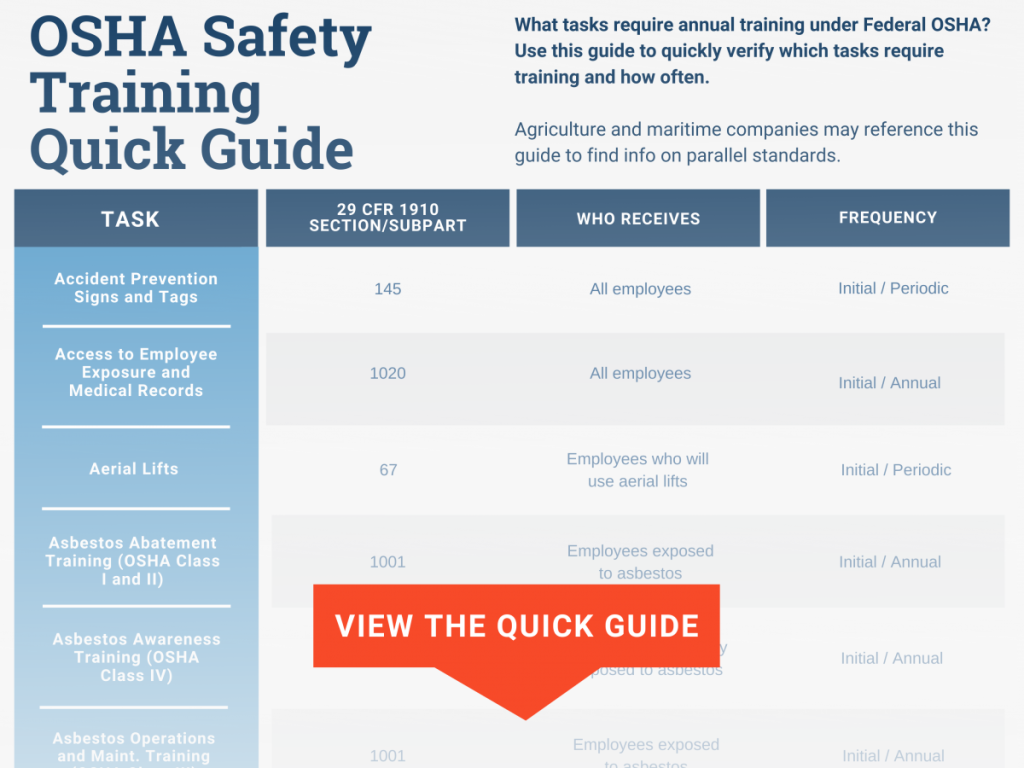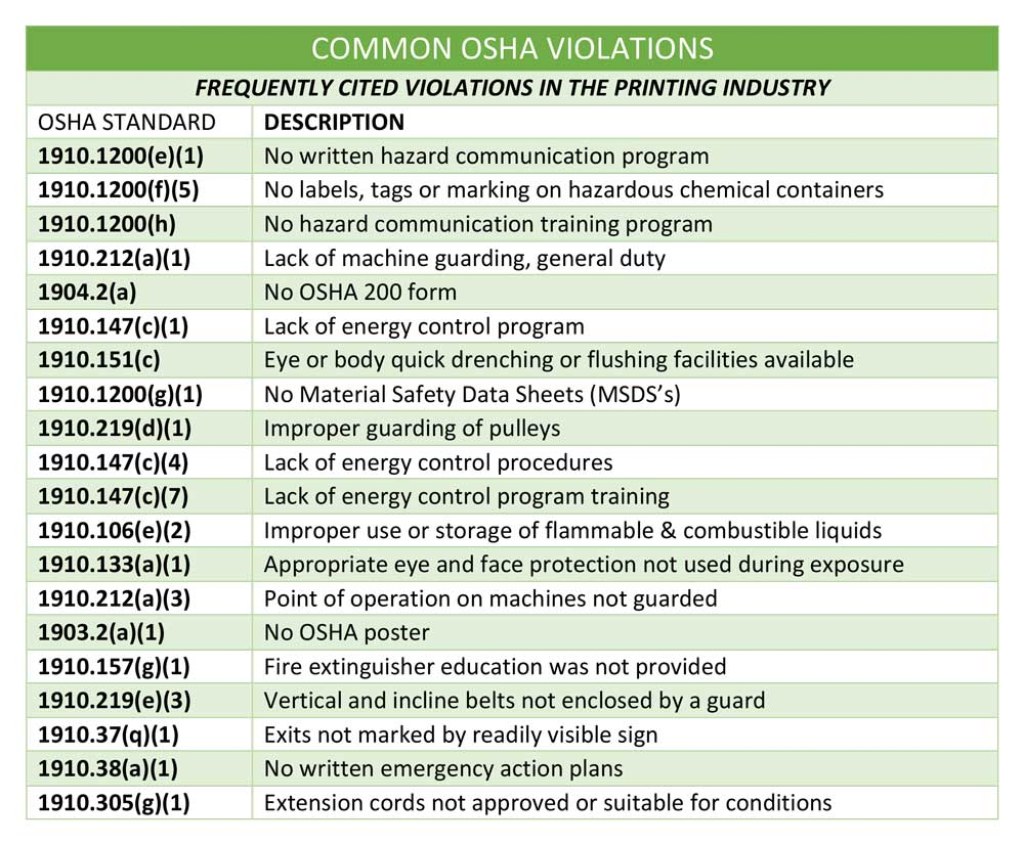Printing Industry OSHA Requirements: Ensuring Safety and Compliance
Introduction
Dear Readers,
Welcome to our informative article on the printing industry OSHA requirements. In this comprehensive guide, we will explore the essential safety regulations and guidelines that printing companies must adhere to in order to ensure a safe and compliant workplace. The Occupational Safety and Health Administration (OSHA) plays a crucial role in safeguarding the well-being of employees in various industries, including the printing sector. By understanding and implementing these requirements, printing companies can protect their workers from potential hazards and avoid costly penalties and legal issues.
![printing industry osha requirements - Industrial Label Printers in the Workplace [Infographic] printing industry osha requirements - Industrial Label Printers in the Workplace [Infographic]](https://printbiz.info/wp-content/uploads/2023/09/industrial-label-printers-in-the-workplace-infographic.jpg)
Image Source: creativesafetysupply.com
Now, let’s delve into the details of the printing industry OSHA requirements and discover how they contribute to a safer and healthier work environment.
Overview of Printing Industry OSHA Requirements
Before we explore the specific OSHA requirements for the printing industry, let’s take a moment to understand the purpose and significance of these regulations. OSHA is a federal agency that operates under the U.S. Department of Labor. Its primary objective is to ensure safe and healthy working conditions for employees by enforcing standards and providing education and assistance to employers.
The printing industry encompasses a wide range of activities, including prepress, printing, binding, and finishing. These processes involve various machines, chemicals, and materials that can pose potential risks to workers if not handled properly. OSHA has established specific standards for the printing industry to address these risks and minimize the occurrence of accidents, injuries, and illnesses. These requirements cover various aspects such as machine guarding, hazard communication, personal protective equipment (PPE), electrical safety, and more.

Image Source: safesitehq.com
Let’s now explore some of the key aspects of the printing industry OSHA requirements.
1. What Are the Printing Industry OSHA Requirements?
📋 The printing industry OSHA requirements encompass a wide range of regulations aimed at promoting workplace safety and health. These requirements cover areas such as:

Image Source: teamflexo.com
✅ Machine Guarding: OSHA mandates that printing machines be equipped with appropriate guards to prevent accidental contact with moving parts. These guards help prevent amputations, crush injuries, and other types of harm.
✅ Hazard Communication: Printing companies must have a comprehensive program in place to communicate information about hazardous chemicals used in the workplace. This includes proper labeling of containers, safety data sheets (SDS), and employee training on chemical hazards.
✅ Personal Protective Equipment (PPE): Employers must provide suitable PPE, such as gloves, safety glasses, and respiratory protection, to employees when hazards cannot be eliminated through other means.
✅ Electrical Safety: OSHA requires printing companies to implement measures to prevent electrical hazards, including proper grounding, equipment maintenance, and employee training on electrical safety practices.
✅ Ergonomics: The printing industry involves repetitive tasks that can lead to musculoskeletal disorders. Employers must implement ergonomic measures to reduce the risk of these injuries, such as providing adjustable workstations and promoting proper lifting techniques.
✅ Fire Safety: Printing companies must have effective fire prevention and emergency response plans in place. This includes maintaining clear exit routes, installing fire suppression systems, and conducting regular employee training on fire safety.
✅ Noise Exposure: OSHA sets limits on the maximum permissible noise levels in the workplace to protect employees from hearing loss. Printing companies must conduct noise assessments and implement engineering controls or provide hearing protection devices as necessary.
2. Who Is Responsible for Ensuring Compliance?
👥 Compliance with the printing industry OSHA requirements is a shared responsibility between employers and employees. Employers are responsible for providing a safe and healthy workplace by implementing the necessary safety measures, training employees on hazards and preventive measures, and keeping accurate records of safety-related activities.
Employees, on the other hand, are responsible for following the established safety protocols and using the provided safety equipment correctly. They should report any hazards, accidents, or near misses to their supervisors or the designated safety personnel.
3. When Should Printing Companies Implement OSHA Requirements?
⌛ Printing companies should implement OSHA requirements from the start of their operations. It is crucial to prioritize safety right from the beginning to prevent accidents and establish a culture of safety within the organization. Compliance with OSHA requirements should be an ongoing process, with regular training, inspections, and updates to ensure continued adherence to safety standards.
4. Where Can Printing Companies Find OSHA Resources and Assistance?
🔍 OSHA provides numerous resources and assistance to help printing companies understand and comply with the industry-specific requirements. The OSHA website offers guidance documents, fact sheets, and training materials that cover various aspects of workplace safety. In addition, OSHA provides free consultation services to small and medium-sized businesses, allowing employers to receive expert guidance and assistance in identifying and correcting potential hazards.
5. Why Are Printing Industry OSHA Requirements Important?
❗ The printing industry OSHA requirements are of paramount importance for several reasons:
🔹 They protect workers from accidents, injuries, and illnesses by addressing potential hazards and establishing safety protocols.
🔹 Compliance with OSHA requirements helps printing companies avoid costly penalties, legal issues, and damage to their reputation.
🔹 Creating a safe and healthy work environment enhances employee morale, productivity, and overall business performance.
🔹 Meeting OSHA requirements demonstrates a commitment to the well-being of employees and can attract and retain talented workers.
6. How Can Printing Companies Ensure Compliance with OSHA Requirements?
🔒 To ensure compliance with the printing industry OSHA requirements, printing companies should:
🔸 Develop and implement a comprehensive safety program that covers all relevant aspects of workplace safety.
🔸 Conduct regular hazard assessments and implement measures to eliminate or mitigate identified hazards.
🔸 Provide regular training to employees on safety procedures, hazard recognition, and the proper use of equipment and PPE.
🔸 Maintain accurate records of safety-related activities, such as training sessions, inspections, and incident reports.
🔸 Review and update safety policies and procedures as needed to ensure ongoing compliance with changing regulations and industry best practices.
Advantages and Disadvantages of Printing Industry OSHA Requirements
Advantages
1. 🌟 Improved Workplace Safety: By implementing OSHA requirements, printing companies can create a safer work environment, reducing the risk of accidents, injuries, and illnesses among employees.
2. 🌟 Legal Compliance: Compliance with OSHA requirements helps printing companies avoid costly penalties and legal issues.
3. 🌟 Enhanced Reputation: Demonstrating a commitment to employee safety can enhance a printing company’s reputation among clients, employees, and stakeholders.
4. 🌟 Increased Productivity: A safe and healthy work environment improves employee morale and productivity, contributing to overall business success.
5. 🌟 Attraction and Retention of Talent: Potential employees are more likely to be attracted to companies that prioritize safety, while existing employees are more likely to stay in a safe work environment.
Disadvantages
1. 🌟 Initial Costs: Implementing OSHA requirements may require an investment in training, safety equipment, and other resources.
2. 🌟 Time and Effort: Ensuring compliance with OSHA requirements requires ongoing effort, including training, inspections, and record-keeping.
3. 🌟 Resistance to Change: Some employees may resist changes to established work practices, requiring effective communication and training to overcome their resistance.
4. 🌟 Potential Disruptions: Implementing new safety measures may cause temporary disruptions to workflows as employees adapt to the changes.
5. 🌟 Overregulation: Some printing companies may perceive OSHA requirements as overly burdensome or unnecessary, leading to resistance or non-compliance.
Frequently Asked Questions (FAQs)
1. Are printing companies required to have a written safety program?
✅ Yes, OSHA requires printing companies to have a written safety program that outlines the specific safety policies, procedures, and protocols implemented within the organization.
2. How often should employees receive safety training?
✅ OSHA recommends that employees receive safety training at least annually or whenever new hazards are introduced or existing procedures change.
3. Can OSHA inspections be conducted without prior notice?
✅ Yes, OSHA inspections can be conducted without prior notice. However, in some cases, OSHA may provide advance notice to the employer.
4. What are the potential penalties for non-compliance with OSHA requirements?
✅ Penalties for non-compliance with OSHA requirements can vary depending on the severity of the violation. They can range from monetary fines to imprisonment in extreme cases.
5. Are there any exemptions for small printing businesses from OSHA requirements?
✅ Small printing businesses may be exempt from certain OSHA requirements if they have ten or fewer employees and are in specific low-hazard industries. However, exemptions are limited, and employers should consult OSHA guidelines to determine their eligibility.
Conclusion
In conclusion, complying with the printing industry OSHA requirements is essential for the well-being of employees and the success of printing companies. By implementing the necessary safety measures, training employees, and maintaining accurate records, printing companies can create a safer work environment, avoid costly penalties, and enhance their reputation. Prioritizing workplace safety not only protects employees but also contributes to increased productivity and employee retention. We encourage all printing companies to familiarize themselves with the OSHA requirements and take the necessary steps to ensure compliance.
Final Remarks
Dear Readers,
We hope this article has provided you with valuable insights into the printing industry OSHA requirements. It is important to note that workplace safety is a continuous effort that requires the commitment and cooperation of all stakeholders. While we have covered the key aspects of the printing industry OSHA requirements, it is essential to stay updated with the latest regulations and guidance provided by OSHA. Remember, the well-being of employees should always be a top priority. Stay safe and compliant!